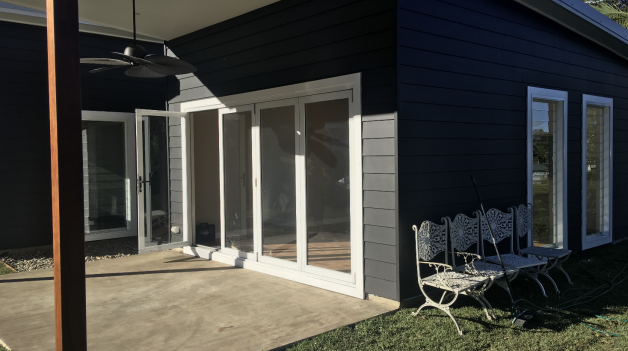Incorporating eco-friendly features in your home doesn’t have to be a daunting task. Whether you're renovating or just looking for small ways to be more sustainable, every effort counts towards reducing your environmental footprint. Here’s how you can easily transform your home into a greener, more sustainable space.
We’re blessed with plenty of sunshine here in Australia, so why not make the most of it? Installing solar panels is one of the most effective ways to reduce your reliance on non-renewable energy. Not only can you cut down your electricity bill, but you’ll also contribute to a cleaner, greener planet.
Water is a precious resource, especially in drought-prone areas. Installing water-saving features like low-flow taps and showerheads, as well as dual-flush toilets, can significantly reduce your water usage. Better yet, consider setting up a rainwater tank to collect and reuse rainwater for your garden or washing your car.
When it comes time to upgrade your home appliances, look for those with high energy-efficiency ratings. Energy-efficient fridges, washing machines, and dishwashers use less electricity and water, reducing your household's environmental impact while saving you money in the long run.
Good insulation is key to reducing your home’s energy usage. Proper insulation keeps your house cooler in the summer and warmer in the winter, reducing the need for heating and cooling. This simple feature can make a huge difference in energy consumption, helping you live more sustainably.
If you're planning a renovation, consider using sustainable materials like reclaimed timber, bamboo, or recycled steel. These materials are not only durable but also environmentally friendly, offering a greener alternative to traditional building supplies.
Composting is an easy and effective way to reduce the amount of organic waste that ends up in landfills. Set up a compost bin in your garden or backyard and toss in your food scraps and garden waste. In a few months, you'll have rich, natural fertiliser for your plants – and it’s completely free!
Switching to LED lights is one of the simplest eco-friendly changes you can make at home. LED bulbs use significantly less energy than traditional incandescent ones, and they last longer, too. Pair this with motion-sensor lighting or smart systems that allow you to control lights remotely, and you’ll be saving both energy and money.
Creating a native garden filled with Australian plants not only supports local biodiversity but also requires less water and maintenance. Native plants are perfectly adapted to the local climate, meaning they thrive with minimal effort, helping you save on water bills and gardening supplies.
When it’s time to freshen up your walls, opt for eco-friendly, non-toxic paints. Traditional paints can release harmful chemicals, known as VOCs (volatile organic compounds), into the air, contributing to indoor pollution. Eco-friendly paints, on the other hand, are low in VOCs and better for your health and the environment.
Installing a smart meter allows you to track your household's energy usage in real-time, helping you identify ways to save energy. By keeping an eye on your consumption, you can make more informed choices about how to reduce your energy use and lower your electricity bill.
Incorporating eco-friendly features into your home doesn’t have to be an all-or-nothing approach. Start small, making a few sustainable swaps that suit your lifestyle and budget, and watch as the benefits – both environmental and financial – add up over time. Going green at home is a win for you and a win for the planet! So why not give it a go?


Prime Costs (PC) and Provisional Sums (PS) are essential terms in construction quotes. Prime Costs cover allowances for materials like fixtures or appliances that haven't been selected yet, offering flexibility but potentially leading to additional costs if more expensive options are chosen. Provisional Sums are estimates for work not fully defined when quoting, like excavation or retaining walls, and may change due to unforeseen circumstances. Understanding the distinction helps homeowners manage budgets and avoid surprises during the building process.
Read more
A pre-handover inspection is crucial when taking possession of a new home to ensure any issues or defects are addressed before the final settlement. Key areas to check include the structural integrity (e.g., walls, floors), fittings and fixtures (e.g., taps, doors, windows), kitchen appliances, bathroom tiles and plumbing, electrical systems, and finishes like paintwork and flooring. By thoroughly inspecting these aspects, homeowners can prevent costly repairs later and ensure a smooth transition into their new home.
Read more
In recent years, a new trend has emerged in the world of residential homes known as the Australian Hamptons style. This unique architectural and interior design style combines elements of traditional Hamptons style with a distinctive Australian twist, resulting in homes that are both elegant and relaxed. Often referred to as Aussie Hamptons, these homes have gained popularity for their timeless appeal and seamless integration with the beachy Australian lifestyle.
Read more